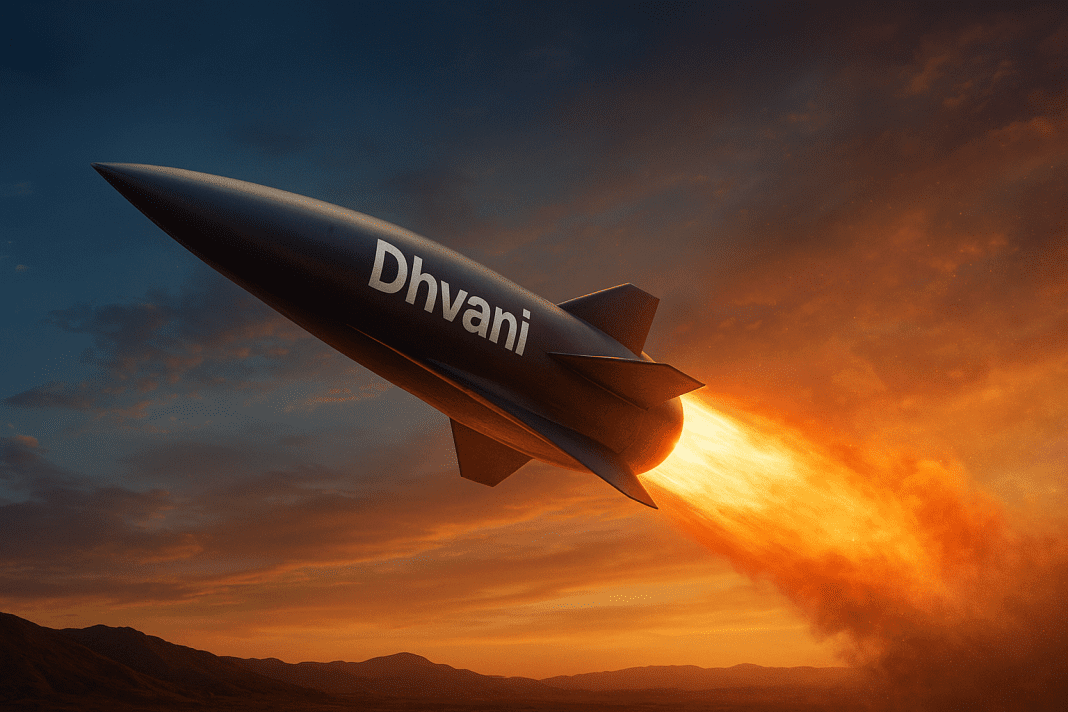India is on the brink of a groundbreaking milestone in military technology with the upcoming test of Dhvani, a hypersonic missile that promises to redefine regional security dynamics. This cutting-edge weapon is designed to travel faster than Mach 5 — over 7,400 kilometers per hour — placing India among the elite nations with hypersonic capabilities. Such speed allows the missile to cover vast distances in minutes, making it a formidable addition to the nation’s defense arsenal.
Dhvani Marks a Leap into Hypersonic Power
The Dhvani missile is not just fast; it is highly maneuverable. Unlike conventional missiles that follow predictable paths, Dhvani uses a Hypersonic Glide Vehicle (HGV) design. After launch, it ascends to extreme altitudes before gliding at hypersonic speeds toward its target. This unique flight pattern makes it extremely difficult for existing missile defense systems to detect or intercept. The combination of speed and agility ensures that Dhvani can evade most conventional defenses, giving India a significant strategic edge.
The missile itself is an engineering marvel. Measuring around 9 meters in length and 2.5 meters in width, Dhvani features a blended wing-body design that enhances both its aerodynamics and stealth. Its ultra-high-temperature ceramic composites protect it from the extreme heat generated during reentry into the atmosphere, withstanding temperatures between 2,000 to 3,000 degrees Celsius. The stealth-optimized shape, with angled surfaces and smooth contours, further reduces its radar visibility, making Dhvani nearly invisible to enemy tracking systems.
Houthis highlight growing military capabilities with hypersonic and drone strike
Dhvani Testing and Indigenous Development
India’s journey to hypersonic mastery began with the successful trials of the Hypersonic Technology Demonstrator Vehicle (HSTDV). This earlier program validated key technologies such as scramjet propulsion and thermal shielding, laying the foundation for the Dhvani missile. With Dhvani, India is poised to join the United States, Russia, and China in the exclusive club of nations capable of deploying operational hypersonic weapons.
The upcoming Dhvani test, expected before the end of the year, will determine the missile’s readiness for operational deployment, which could occur by 2029-30. With estimated ranges of 6,000 to 10,000 kilometers, Dhvani may effectively double the reach of India’s current Agni-V intercontinental ballistic missile. Such range allows the missile to strike deep into potential adversary territory, providing a robust deterrent against threats.
Dhvani’s development is fully indigenous, showcasing India’s self-reliance in critical defense technologies. While other global powers invest massive budgets into hypersonic programs, India has achieved comparable capabilities through homegrown innovation, highlighting the nation’s growing technological strength and strategic independence.
Strategic Implications for the Region
The introduction of Dhvani significantly alters the military balance in South Asia. Pakistan continues to rely on conventional ballistic missiles and older-generation weapons, which are less capable of countering advanced hypersonic threats. Dhvani’s high speed, unpredictable flight path, and sharp maneuverability make interception by even the most sophisticated air defense systems extremely challenging. This technological gap provides India with a strategic deterrent that is difficult to match.
Globally, Dhvani also places India on par with other hypersonic-capable nations. China’s DF-ZF and Russia’s Avangard hypersonic glide vehicles have already demonstrated their strategic potential, while the United States is still catching up with programs such as Dark Eagle and HACM, which have faced delays despite large-scale investments. Dhvani’s entry signals that India is not only keeping pace with leading powers but also setting benchmarks in the field of hypersonic weapons.
👉 China’s hypersonic mothership revives NASA’s failed 1970s Scissor Wing to unleash drone swarms
The missile forms a part of India’s broader hypersonic portfolio, which includes multiple HGV configurations for diverse strategic missions — ranging from long-range anti-ship roles to intercontinental nuclear deterrence. This multi-faceted approach ensures India has the right tools to meet a variety of defense requirements, reinforcing its regional influence and global military standing.
With the Dhvani missile test date approaching, the message from India’s defense sector is clear: Dhvani is a transformative weapon that combines speed, stealth, and precision in ways that redefine the future of modern warfare. Its development underlines India’s growing capability to maintain strategic superiority, while providing a significant boost to the nation’s defense technology and military deterrence.

